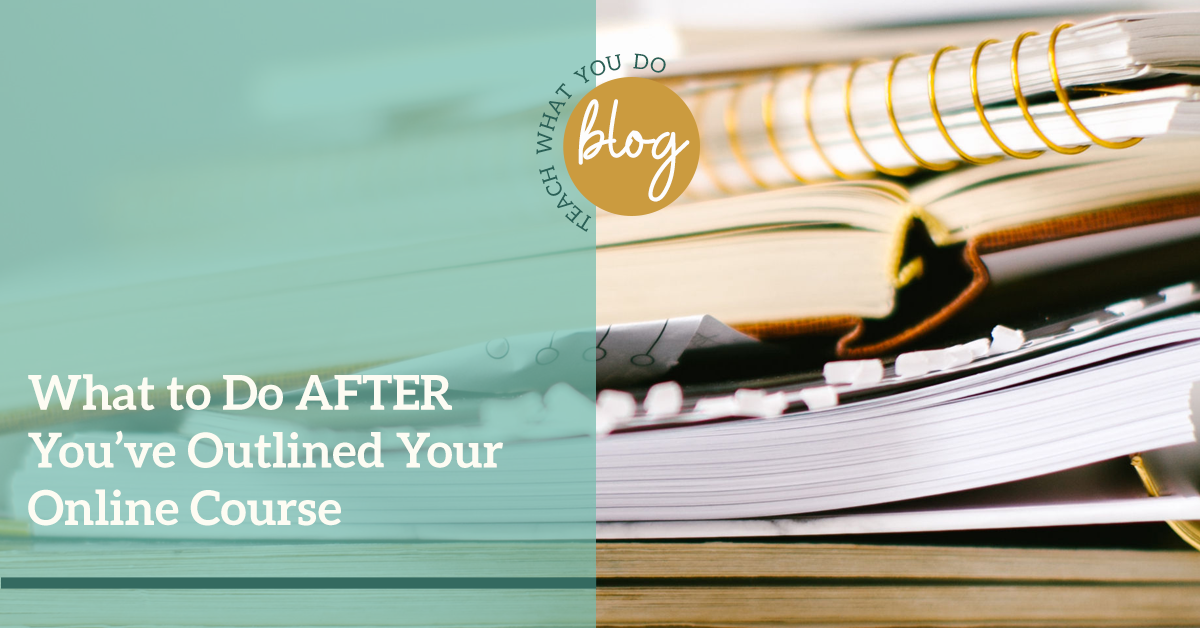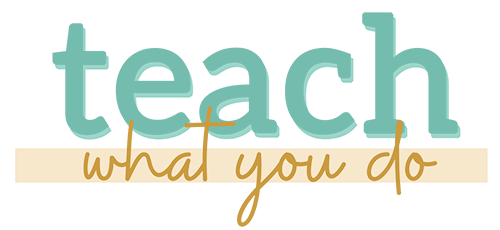
Are you in slow-mo when it comes to getting your course outline done because you don't know what comes next? Or did you outline it and then stop because you didn't know what to do then?
The work that comes after your outline is to choose ONE lesson you're looking forward to creating and then dig into making it with the steps that follow.
This first time is going to be different than with future lessons when you'll be more efficient. With this first lesson, you're figuring out what your process will be.
You're finding out how you best work, and:
you're developing a repeatable structure you can use for each lesson to come.
STEP 1. Get raw ideas written out, shaped, and sequenced for a first lesson.
Get out your best writing tool. That might be a Google Doc or Evernote or OneNote or Scrivener or perhaps a pen and paper. Now start writing things down that you know you want to cover.
Once the first draft is done, you'll need to work them into shape. If you're new to turning ideas into lessons, I've got a deep-dive on the process in this video.
STEP 2. Develop a repeating lesson arc.
Now think about how the arc and flow of this first lesson can be the model for the other lessons. The lessons in your class won't all have the exact same structure but you do want there to be a familiarity. So look at this lesson and figure out how it will flow.
Here's a video lesson on developing an arc for your course lessons.
STEP 3. Pre-production on your first lesson.
Now it's time to get your lesson content “production ready.” The process will vary based on the format of your lessons. It's all about making your “pre-production” tool.
You could be using slides, speaking straight to camera, demoing work on a project and make a video from any of them. Or you might be laying out an eBook, recording an audio, or scheduling and setting up for a live teaching session.
If you're teaching with slides, pre-production is creating the slides. If you're teaching straight to camera, then pre-production is writing script or detailed outline. For live-demo teaching, you might create a story board of steps to cover and prepping and staging the actual project.
STEP 4. Production of your first lesson.
Now the work is to record the lesson or do a practice run of a live presentation or lay out your ebook–whatever it takes to get your lesson ready to deliver.
STEP 5. Make templates and document the process so you can make subsequent lessons.
Now that you've gone through one time to figure things out, you'll need to repeat. And you'll want to get things set up so that you can batch some of the work. This means creating templates for slides or scripts or storyboards. It also means documenting exactly what settings you'll use for recording a video or scheduling a webinar hosting an interview.
In summary.
The work after outlining your course is to make a first lesson, so that you can figure out your work flow, develop processes and templates, and be ready to make ALL of our lessons.
